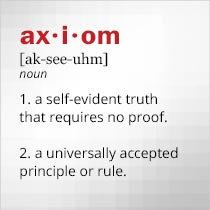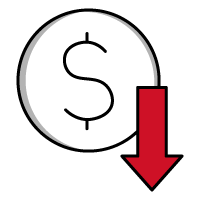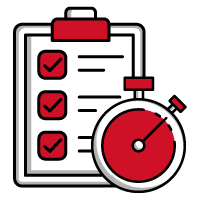Keep UAVs Flying High with Proper Testing
March 04, 2020
 |
Unmanned aerial vehicles (UAVs), popularly known as drones, have been a part of military operations for decades, often paving the way for an operation with their remote intelligence, reconnaissance, and surveillance (ISR) capabilities. Those familiar with military drones may think of million-dollar UAVs like the Predator with comprehensive electronic weapons payloads, including radar and sophisticated navigation and guidance systems. The military demand for fixed- and rotary-wing UAVs has grown steadily over the past decade, but it is not the only market for these remote-controlled vehicles. Drones are rapidly gaining popularity in many other commercial and industrial markets, such as construction, real-estate aerial views, commercial and industrial security, warehouse management, law enforcement, firefighting, surveying, and even for crop dusting and fertilizer inspections in agriculture. Smaller, commercial-grade drones are also being used for home and office surveillance and for entertainment, as “toys” for hobbyists experimenting with different electronic payloads (such as RF control links and video cameras).
Many of these UAVs are smaller, battery-powered versions of full-scale aircraft, with more advanced composite materials and features such as folding wings. A steady trend in UAV design has been in miniaturization and in providing more capabilities in smaller units. Quadracopter drones with four rotary wings and on-board visual sensors (cameras) have been designed that weigh less than 1 lb. and fit within the palm of the hand. Such miniaturized UAVs also feature quite extensive electronic systems, such as millimeter-wave (mmWave) radars, that enable them to fly safely, without interfering with each other or with existing air traffic. To ensure safe operation, whether in large military UAVs or smaller commercial/industrial drones, these electronic systems must be properly tested, and that calls for knowing which systems to test and the right kinds of test equipment. This blog is the first in a series that will take a closer look at the global fascination with UAVs and how they are used, whether for farming or for warfare, and some of the best test tools that can be applied to ensuring the best UAV performance possible. Testing is essential to ensuring that all types of UAVs meet their electronic performance specifications, and not just for the assurance that the ISR data for an upcoming battlefield engagement is reliable; for the growing number of commercial “hobbyist” drones, the U.S. Federal Aviation Administration (FAA) is now requiring a three-year drone registration to manage U.S. airspace, especially to avoid accidents around airports with their “manned” (and “womanned”) aircraft.
Diagnosing a Drone
Electronic testing of circuits and systems within a UAV can involve quite a comprehensive set of measurements, considering the many different electronic systems within a typical drone. While weapons systems may only be found within certain larger military UAVs, guidance and navigation systems, such as those based on Global Positioning System (GPS) satellites, are installed in most drones, whether for military or civilian use. With the constantly decreasing costs of GPS receiver integrated circuits (ICs), GPS receivers can be included as part of the navigation systems of even the lowest-costing hobby drones and almost all industrial, commercial, and consumer UAVs. By using geospatial data, these on-board GPS receivers can also play a role in many automatic functions provided in many UAVs. One of these functions is a “return to home” feature. By working with a UAV’s onboard single-board computer (SBC) subsystem (which serves as the central controller for the different electronic sensors in a UAV’s payload), the GPS receiver can provide geospatial data for a UAV’s starting point to bring it back to that location should an operator’s control signals fail or be blocked or interrupted. Of course, a GPS receiver within a UAV is one more electronic component that must be tested by a drone manufacturer on the production line and by anyone maintaining UAV performance in the field.
Of course, a GPS receiver is only one of many electronic systems within a typical UAV, whether it is a commercial, industrial, or military vehicle. Perhaps one of the most recognizable pieces of UAV electronic equipment is the high-definition (HD) camera system, many of which are installed on UAVs as after-market upgrade equipment. UAVs intended for security and surveillance operations may also be equipped with an infrared (IR) camera system to provide night vision. Additional electronic systems and sensors within a UAV’s payload (which must be tested at some point) include different types of cameras, radar, navigation and guidance, GPS and GLONASS satellite receivers, and motion detectors.
Perhaps a practical place to start in the electronics testing of a UAV might be with the ground control system (GCS). Although some of the higher-end UAVs are being designed for autonomous use, without a dedicated operator, the majority of UAVs, especially for consumer, commercial, and industrial applications, fly according to the commands of an operator handling a GCS, which handles altitude and direction and manipulates some of the available payload electronic equipment, such as the zoom and focus of an HD video camera. Controllers with display screens for the UAV’s camera are often called first-person-view (FPV) controllers, although some users may also download the appropriate software and use a tablet computer or smartphone with wireless local area network (WLAN) capability at the right frequency for control of the UAV. For commercial and industrial drones, the wireless link between the controller and the UAV is typically within unlicensed frequency bands at 2.4 and 5.8 GHz. To avoid interference with other UAVs within distance, the wireless link is often maintained by means of frequency-hopping spread-spectrum (FHSS) technology.
Whichever frequency band, a UAV and its GCS will each employ a multichannel wireless transceiver to transfer control data from the operator and sensor data from the drone back to the operator. A minimum of four transceiver channels are typically used for control of each of the four directions while additional channels are needed to accommodate the different types of sensors that are part of a UAV’s payload. Transmit signal levels are at low power, with communications performed in line-of-sight (LOS) mode, since any kind of obstruction, such as a building can absorb or reflect transmitted signals and disrupt control with a wireless link.
Testing the Link
Evaluating the performance of the link between a UAV and its GCS requires generating suitable test signals and having analysis equipment capable of detecting the quality of signals being transmitted by the transceivers on board the UAV and its GCS. The unlicensed 2.4-GHz band extends from 2.4000 to 2.4835 GHz although UAV transmit channels are typically restricted to a 1-MHz bandwidth and a transmit power level of about +25 mW. The unlicensed 5.8-GHz band runs from 5.725 to 5.825 GHz at about the same 25-mW maximum transmit level. As noted, for commercial UAVs, the signals are often encoded with FHSS patterns to avoid interference with other 2.4-GHz wireless devices in an area, including other UAVs. Military UAVs can use any frequencies and/or power levels required.
Testing the receiver portion of a UAV’s transceiver involves re-creating the signals being sent by the GCS and how they appear at the UAV across different control distances. A similar practice is used for testing signals transmitted from the drone to the GCS’s receiver. As with testing any set of transmitters and receivers, the test equipment must be capable of duplicating the functionality and performance of the transmitters and receivers, such as a signal generator for transmit functions and a spectrum analyzer for receive functions. Testing is usually performed by interconnecting the test instrument to the device under test (DUT) with a test cable at a test port, although the use of over the air (OTA) testing using test antennas to send and receive test signals is gaining in popularity.
A signal generator should provide suitable bandwidth, output power, and modulation capabilities to duplicate the link signals between a UAV and GCS under various operating conditions. The Keysight (formerly Agilent) E8257D PSG microwave analog signal generator provides more than enough tuning range with option 520, from 250 kHz to 20 GHz with 0.01-Hz or better tuning resolution. It features flexible modulation and high-speed sweep modes to quickly jump amplitude and frequency according to a start and stop range or an arbitrary list. It delivers as much as +28 dBm output power to 6 GHz. Step attenuator options can adjust output signal levels below -110 dBm for re-creating RF links at extremely low power levels.
For creating UAV-GCS link signals using several modulation formats, the Rohde & Schwarz SMF100A microwave signal generator supports multiple simultaneous modulation formats, including AM, FM, phase, quadrature, amplitude shift keying (ASK), frequency shift keying (FSK), and phase shift keying (PSK) modulation. It generates signals from 100 kHz to 22 GHz ad can hop across frequencies and amplitudes with as many 2000 settings stored in a list.
Spectrum analyzers are available examining signals captured between UAVs and GCS units, in full-sized versions for benchtop design and production testing and in smaller battery-powered portable units for in-field use. The Tektronix RSA5106A benchtop spectrum analyzer captures and displays signals from 1 Hz to 6.2 GHz at acquisition bandwidths as wide as 110 MHz. It receives and shows signals with a wide range of modulation, including AM, FM, phase, and pulse modulation, and captures extremely low-level signals, with a noise floor of -149 dBm/Hz at 6.2 GHz.
The Rohde & Schwarz FSW8 benchtop signal and spectrum analyzer captures and displays AC- and DC-coupled signals to 8 GHz with 0.01-Hz frequency resolution. It includes an impressive set of channel and sweep filters to isolate signals of interest and can extend a standard 10-MHz signal analysis bandwidth to as wide as 500 MHz by choice of options. The displayed average noise level (DANL) is -152 dBm to 8 GHz and as low as -166 dBm to 8 GHz with a built-in preamplifier turned on. For those who may need an analyzer that can also perform OTA measurements on Fifth Generation (5G) small cells at mmWave frequencies, the Keysight / Agilent 8565EC spectrum analyzer from provides a wide frequency range of 30 Hz to 50 GHz, with low noise floors of -143 dBm beyond 6 GHz for UAV link testing and -127 dBm to 50 GHz for OTA signal analysis of 5G signals at mmWave bands such as 24, 28, and 39 GHz.
Testers tasked with evaluating UAV-GCS RF link performance in the field, for LOS and beyond-line-of-sight (BLOS) measurements of signals from drones to controllers and back, will need a reliable hand-held spectrum analyzer that provides healthy battery run times. For example, the Tektronix H500 portable spectrum analyzer is a unique analysis tool with a frequency range of 10 kHz to 6.2 GHz and a host of on-board tools for hunting different signals. It can automatically identify and classify different wireless signals within its range (and be programmed to find UAV-GCS link signals) and has a built-in GPS receiver for plotting signal locations.
For wider analysis bandwidth, the Anritsu MS2720T is the lowest-frequency member of Anritsu’s Spectrum Master family of battery-powered, hand-held spectrum analyzers, with frequency range of 9 kHz to 9 GHz and options to 43 GHz. For such a small analyzer, weighing as little as 8.1 lbs. (3.7 kg), it is packed with many automatic measurements, including occupied bandwidth and many demodulation measurements, to serve UAV testers in the field. It runs for three hours on a battery charge.
Next: Digital Testing
These are a few examples of the test instruments that provide the capabilities to simulate and analyze the RF/microwave signals that propagate between small and large UAVs and their GCS units, and this is only one type of testing that needs to be performed on the many different electronic systems and components within a UAV. For more on the many electronic tests that can evaluate the performance of UAVs, whether for commercial, industrial, military, or consumer markets, don’t miss the next blog from Axiom Test Equipment on electronic testing of UAVs, focusing on testing the digital hardware such as SBCs that helps UAVs perform ISR and other missions successfully.
To learn more about any of these instruments, or to rent or purchase these or other test instruments, please visit Axiom’s website at www.axiomtest.com to view our inventory. If you would like help selecting the right equipment for your project, contact Axiom Test Equipment’s sales department at sales@axiomtest.com, or by calling an Axiom sales representative at 760-806-6600.
Back to BLOG








